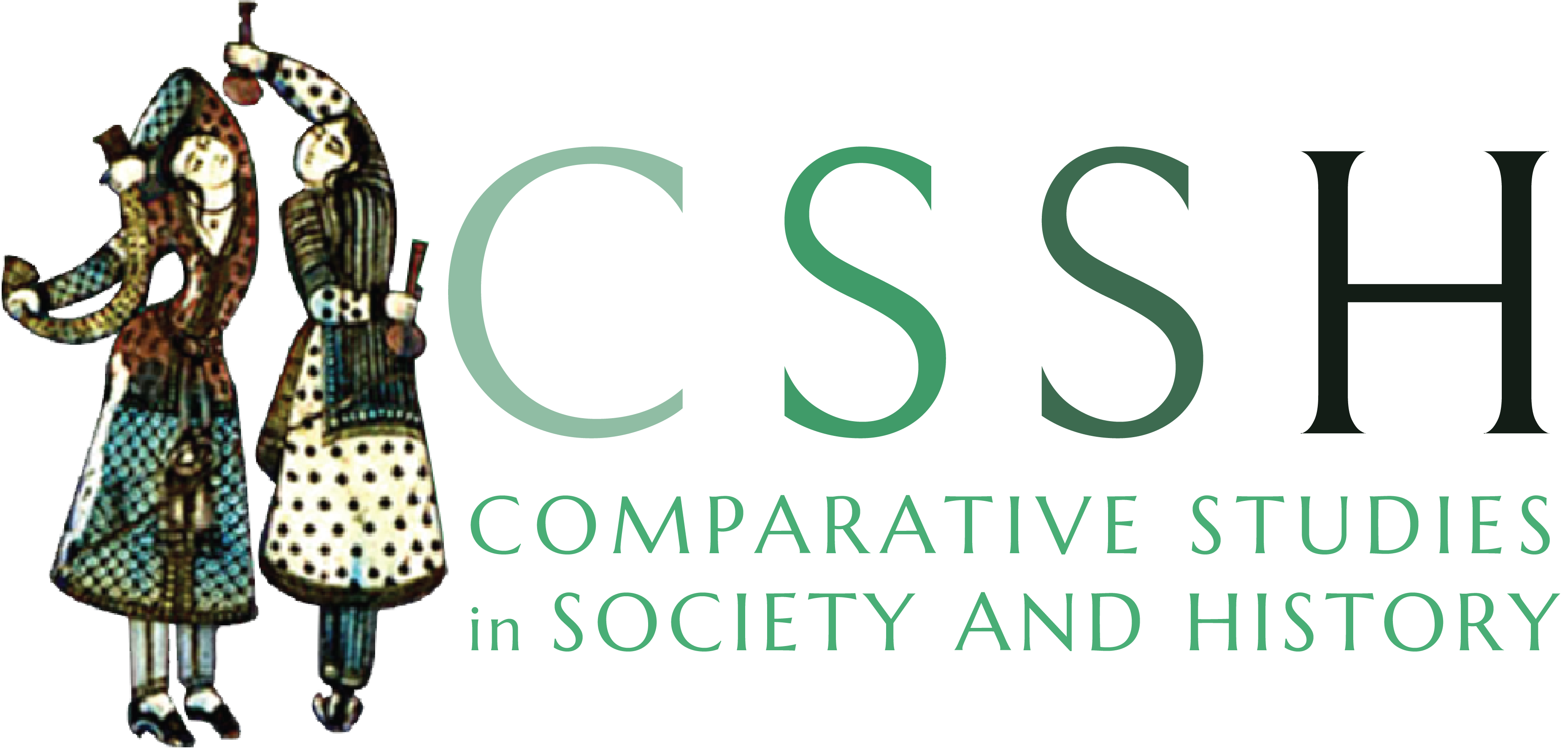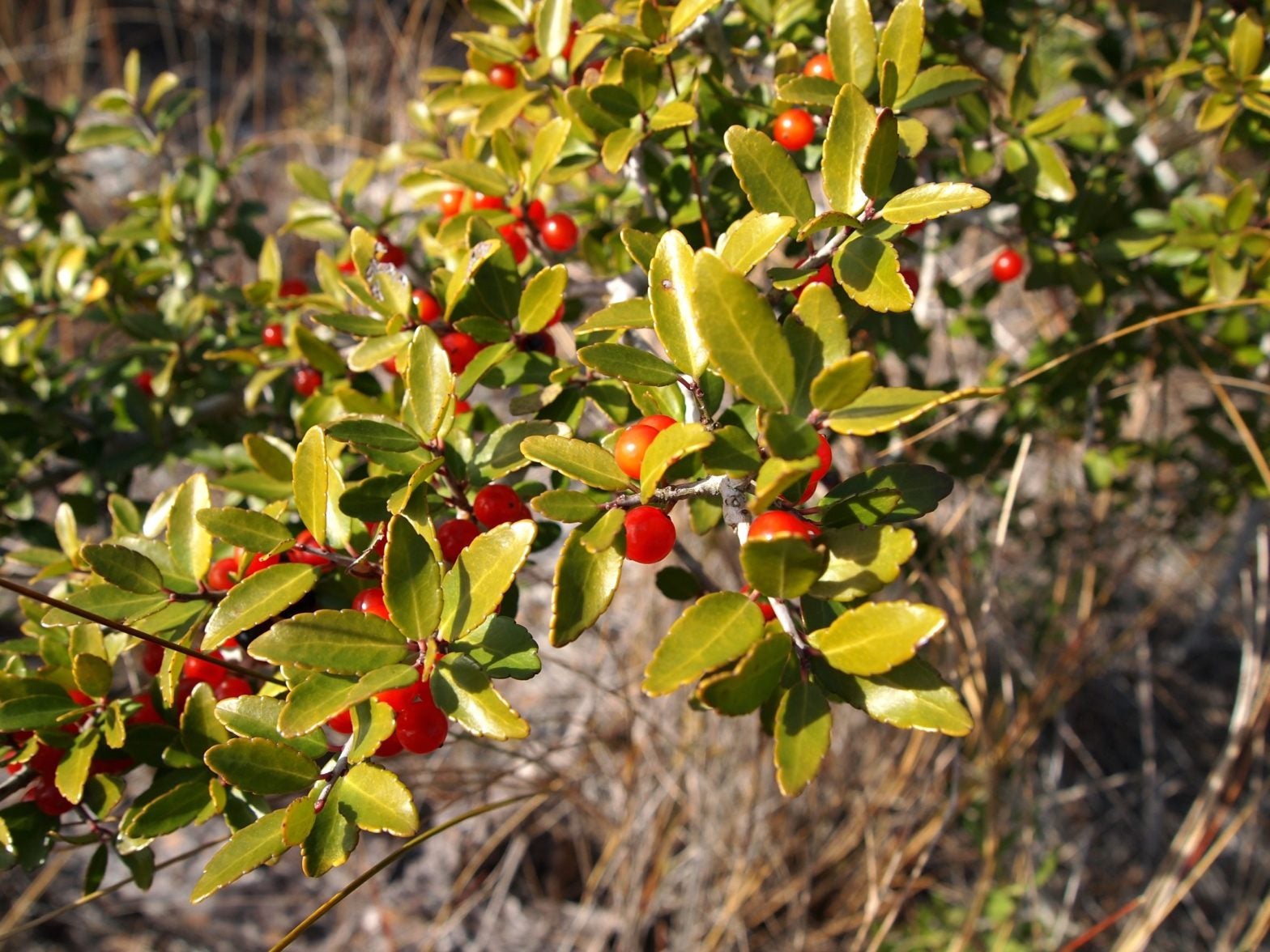CSSH has had the pleasure of engaging Christine Folch‘s work on caffeinated beverages since her 2009 article, “Stimulating Consumption: Yerba Mate Myths, Markets, and Meanings from Conquest to Present” (52-1). This spring, she returned to the journal with a study of yaupon, another buzzy brew. However, this North American stimulant never attained the popularity of yerba mate, much less coffee–a mystery she explores in “Ceremony, Medicine, Caffeinated Tea: Unearthing the Forgotten Faces of the North American Stimulant Yaupon (Ilex vomitoria)” (CSSH 63-2, 2021). Here, Folch reflects on the “divergent trajectories of the two drinks,” the questions raised by these differences, and her own path from yerba mate to yaupon.

When many of us hear that there is a caffeinated beverage native to the southern coast of North America that has been in use for millennia, I think we ask, what’s the catch? Why don’t we drink it? There must be something wrong with it. But the first thing to know about yaupon (sometimes called “cassina”) is that it’s delicious. The answer is not some flaw in the flavor. Yaupon (pronounced “yoʊ pon,” not “yow pon”) is less bitter than coffee or tea or chocolate and still delivers a balance of the psychoactive alkaloids that help make those drinks so popular: caffeine, theophylline, and theobromine.
Perhaps, then, it was really quite obscure in the past, nigh unknown. Again, the historical record shows the opposite. At the point of Contact, yaupon as a key ingredient for the Black Drink ceremony was consumed by Indigenous communities spanning the Carolinas and Georgia, Florida, the Gulf coasts of Alabama, Mississippi, Louisiana, Texas, and quite possibly as far into Mexico as Oaxaca. Mentions of Indigenous use of yaupon, así, caçina, or cassina fill the chronicles of Spanish, French, and English colonizers from the 1530s onward. Familiarity with the drink quickly transferred to non-Indigenous communities. To wit, John Locke himself requested samples as a potential commodity from the New World. Descendants of European settlers and of Africans, both free and enslaved, regularly consumed yaupon in southern North America, as the presence of “yaupon nurseries” (orchards) in pre- and post-Revolutionary North Carolina attest.
Was it, then, that coffee and tea were just more familiar? Maybe yaupon simply came late to the table. Rather, Europeans and their descendants developed caffeine habits over the seventeenth and eighteenth centuries as coffee and tea were introduced to the North Atlantic as luxury items and later became mass commodities. It is more fair to say that yaupon had a moment in the sun and then, curiously, receded just at the moment when North Atlantic caffeine preferences were established.
As someone writing a book on the cultural history of yaupon’s better known South American cousin yerba mate, a stimulating drink that became and remained wildly popular outside of its original Indigenous context, the puzzle of the divergent trajectories of the two drinks raised important methodological and theoretical questions for me. In fact, the Americas has something of an Ilex beverage fix: yaupon (Ilex vomitoria), yerba mate (Ilex paraguariensis), and western Amazonian guayusa (Ilex guayusa) have all been consumed for their psychoactive and social potency for hundreds, if not thousands, of years. There are striking similarities in Indigenous practices around ceremonially-important drinks made from the three hollies in spite of the vast distances between their growing regions, according to the earliest colonial chronicles. Perhaps most notable is the fact that though they do not possess emetic qualities, all three featured ritualized regurgitation as a means of regulating the caffeine intake and as a matter of cleansing.
While yerba mate became an entrenched commercially traded agricultural commodity under the Spanish empire by the late sixteenth century, yaupon resisted commodification until the early twenty-first century. The story of yaupon points to the complicated interplay of indigeneity, European colonialisms, and the identities of the consumers of psychoactive substances. My article in Comparative Studies in Society and History untangles the trajectory of yaupon as a commodity and medicine, and as ceremony, by examining the ways different communities in southern North America—Indigenous, settler colonial, Black—handled the plant and the drink. For the article I assembled a yaupon archive from the sixteenth to the twenty-first centuries from physical and digitized sources in English, French, and Spanish. In general, European settler knowledge structures favored writing and actively disparaged orality while dismissing any Indigenous writing as “paintings” or demonic. Moreover, for much of the time period covered, teaching an enslaved person to read was criminalized. And so, the voices that dominate early writing on yaupon are settler colonial, explicitly and implicitly constructing a social hierarchy that diminishes the knowledges and practices of non-Europeans.
Grappling with the limits of writing and the historical record required reading historical documents against the grain and reading between the documents. Although colonial and settler writing regularly details Indigenous Black Drink ceremonialism (often through a politics of disgust) as well as yaupon consumption among white settler communities in the South and the plant’s potential as a commodity, use of yaupon in Black communities is curiously ignored. For this article, I instead had to piece together a few direct references from the nineteenth century, some early twentieth century magazine photographs, and what we know of antebellum life: Southern cuisine was prepared and created by Black cooks, and farms and plantations had yaupon nurseries. Perhaps most importantly, many West Africans came from communities with well-developed caffeine habits and customs in the kola nut. And even if kidnapped Africans did not, enslavers put kola nuts in the water supplies of ships on the Middle Passage. Africans and their descendants in the North American south had a context for caffeinated beverages, were directly engaged in developing local plant-based technologies and knowledges, and brought medicinal-social perspectives that acknowledged vegetal agency. For these reasons, familiarity with yaupon has lingered in important ways in Black communities in the U.S. South.
Yaupon’s past importance in the South can be seen in its ubiquity as an unremarkable, easy-to-tend shrub planted in yards and on university campuses. Within the span of a few weeks in 2019, upon hearing that I was working on book on yerba mate, two different scholars mentioned that they’d heard about a forgotten North American equivalent. But I’m not sure I would have pursued the matter so thoroughly if we hadn’t figured out that the unwieldy hedge right outside our campus apartment was the plant in question and if we had not roasted the leaves to make a tea of it ourselves.


